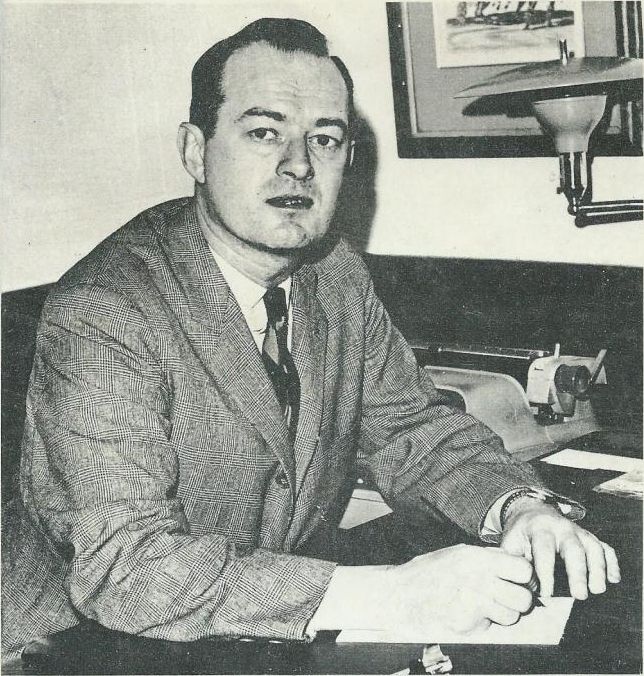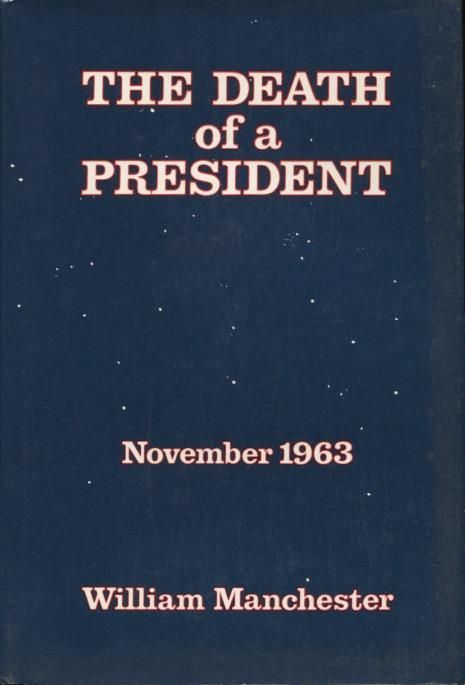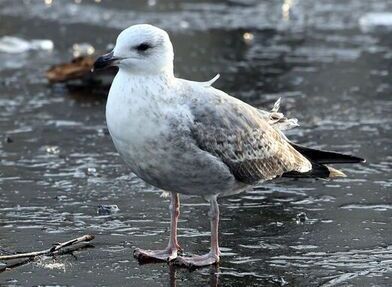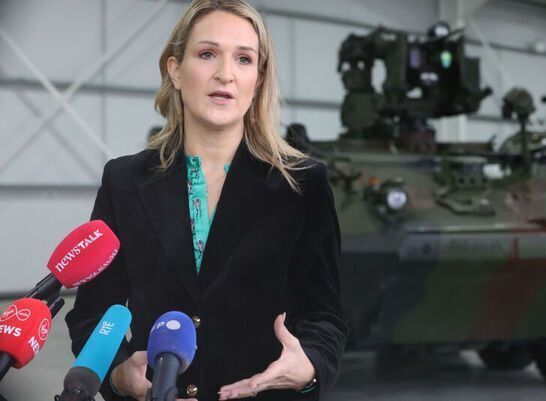“Jacqueline Kennedy and Nellie Connally stood a few feet apart, awaiting news of their gravely wounded husbands. Both knew the President’s wounds had been mortal, and if there was such a thing as decorum in these circumstances, the Governor’s wife should have been the first to speak. She wasn’t. Jackie gently inquired about Connally. At first Nellie said nothing. She was thinking this woman was almost a total stranger to her. She replied abruptly, ‘He’ll be alright.’ And that was all.”
William Manchester, in “The Death of a President,” used this interaction as one of several that illustrated how people can respond differently to the same traumatic situations. This particular reconstruction was based on interviews with both women by the author for his extraordinary 1967 book, which was subtitled “November 20 – November 25, 1963.”
Manchester reportedly spoke to 1,000 or so people, and lists alphabetically as sources close to 300, with their title or status at 12 p.m. on Nov. 22, 1963, and the date or dates he interviewed them.
The first of the names is Bess Abell, “Personal Secretary to Mrs. Johnson,” whom he interviewed on June 10, 1964; she’s listed on Page 660. The last — Abraham Zapruder, “Dallas manufacturer of women’s garments,” interviewed on Sept. 21, 1964 – is on Page 669.
Zapruder, who famously brought his camera to film the motorcade, was the only Z; There were just two Ys above him, and, as we shall see, they both rode in the same car in Dallas with Vice President Lyndon Johnson.
Four or five dates are listed for several interviewees: Mrs. Kennedy; her personal secretary Mary Gallagher; the president’s personal doctor Rear Admiral George Burkley; special assistant to the president Kenny O’Donnell; assistant to the president Dave Powers; Attorney General Robert Kennedy, who spoke to Manchester for an aggregate 10 hours; John Metzler, superintendent of Arlington National Cemetery; James Lehrer, reporter for the Dallas Times Herald; Maj. Gen. Chester Clifton, military aide to the president; and Burrell Peterson, inspector, U.S. Secret Service.
The book had its origins with Mrs. Kennedy who, the publishers said in the flyleaf, “realized that she and others would be obliged to share their recollections of the national tragedy with a responsible writer—and so she and Senator Robert Kennedy asked Mr. Manchester to set down a history of the assassination and the days immediately preceding and following it.”

William Manchester in a publicity shot for "The Death of a President."
The publishers added that the author “worked 12 to 15 hours a day, operating out of headquarters in the National Archives.”
Manchester had written a book, “Portrait of a President,” about JFK’s first year in office, and they had much in common, it was pointed out. They had served in the Pacific theater in World War II, and met when in their native Boston area while recovering from their war injuries. “Now [in 1961, when the biography was undertaken] they were fathers of daughters of the same age, had traveled to the same foreign countries and shared a deep interest in American history,” the flyleaf stated.
At times, consciously or not, Manchester’s employed in “The Death of a President” the fly-on-the-wall technique familiar to fans of recent documentary film, as well as touches of the “new journalism” that was coming into vogue.
Both can be seen with the silent interaction between a Dallas police officer and Jackie Kennedy. The author wrote, “Outside the trauma room, Sergeant Bob Dugger was scowling fiercely. The bespectacled Sergeant was a towering bullock of a cop, with a beefy face and piercing eyes; to Jacqueline Kennedy he looked rather ugly. She had no way of knowing he was worried sick about an automobile.” He had driven to Parkland Hospital from the Trade Mart, where JFK had been due to speak, in the deputy chief’s car without getting permission.
Dugger, who labeled himself a “Kennedy Democrat,” hoped the president’s wife wouldn’t view him a segregationist and a right-winger like so many of his colleagues in Dallas and Texas law enforcement were.
Indeed, it had occurred to her. Manchester writes, “The Sergeant glowered. Mrs. Kennedy, observing him covertly, wondered what his thoughts about the President had been, whether he could be a Bircher.”
The last is a reference to the far-right John Birch Society. Dallas’ reputation as a violently reactionary city figures prominently in Manchester’s account, and the author speculated about its effect on the assassin Lee Harvey Oswald’s state of mind.
The presidential entourage was upset and disgusted by the full-page attack ad against JFK in the conservative Dallas Morning News. Locally, though, folks were amazed at how well the Texas trip had gone so far, and how rapturous the welcome was. Finally in Dallas, the Democratic minority turned out in force on the sidewalks to greet the president and his glamorous first lady, even if those looking on from office windows higher up seemed rather less enthusiastic.
Still, JFK had gone to deal with strife in the Democratic Party in Texas and when the liberal U.S. senator for Texas Ralph Yarborough suggested it didn’t matter given the welcome – in which the visiting chief executive would see perhaps 1 in 10 voters, before it was over – the president could not agree. He felt that if the traveling press could focus on the political feud, then that would be the lead story in the big city newspapers over the weekend.
So, Kennedy’s people worked hard on the optics. The president made it clear to Yarborough that he wanted him to ride with Vice President Johnson, a longtime ally of the conservative Governor Connally, as if they were best friends.
Senior aide Lawrence O’Brien (the burglary of whose office touched off the Watergate scandal in the following decade) practically manhandled Yarborough into the back seat of the vice-presidential car, with Lady Bird Johnson in the middle between her husband and the senator, as it was about to journey to Fort Worth airport.
At Love Field, the airport in Dallas, according to Manchester’s account, “Larry had assumed that the Yarborough problem was solved. Suddenly he realized that the Senator had mentioned nothing about riding with the Vice President here. Simultaneously he saw the President staring at him and cutting his eye meaningfully towards Yarborough, who appeared to be looking for another car.” As he had at the Hotel Texas in Fort Worth, he grabbed Yarborough and pushed him into the back seat beside Lady Bird. Secret Service agent Rufus Youngblood and the driver, a Texas state cop, were in the seats in front of them.
Soon Lady Bird would be first lady, and Jackie would be planning her husband’s funeral in meticulous detail. Among her requests were the Irish army cadets, whose drill the president had admired on his visit to Ireland in June, and the “eternal flame.” The U.S. army brass balked at the latter, but Richard Goodwin, the presidential aide tasked with arranging it, insisted. “Listen,” he said to one officer, “if you can design an atomic bomb, you can put a little flame on the side of that hill, and you can make it so that she can light it.”
In the end, Jackie Kennedy was not happy with Manchester’s account, which triggered a very public dispute. She claimed some of the more personal information revealed was meant for the Kennedy Library archives. (Her interviews with Manchester are sealed there, and can’t be made public until 2067. The original 380,000-word manuscript of the book is held at Wesleyan University with "extremely restricted use.”)
Manchester agreed to deletions of passages totaling 1,200 words, which contained revelations that were in his view “harmless.”
Bobby Kennedy was worried about something else – political optics, as in the case of JFK and the Texas visit. He felt that whenever and wherever President Johnson was depicted in an unflattering light, it would be attributed to Kennedy family influence, given his bitter rivalry with his brother’s successor and his own presidential ambitions.
Ultimately, a disclaimer was inserted from those who’d commissioned this amazing historical document: Jackie and RFK saying they didn’t approve or endorse the material in the book.
Manchester, a former U.S. Marine marksman like Oswald, penned a score of works, beginning with a 1951 biography of journalist H.L. Mencken, whom he’d befriended as a young reporter. But he would be best known for his biography of General Douglas MacArthur, “American Caesar,” his three volumes on Winston Churchill, “The Last Lion,” which he was unable to complete without help because of a stroke in the 1990s, and his chronicle of the death of perhaps the most famous veteran of World War II, John Fitzgerald Kennedy.
In his dedication to that last book, William Manchester wrote, “For all in whose hearts he still lives – a watchman of honor who never sleeps.”








